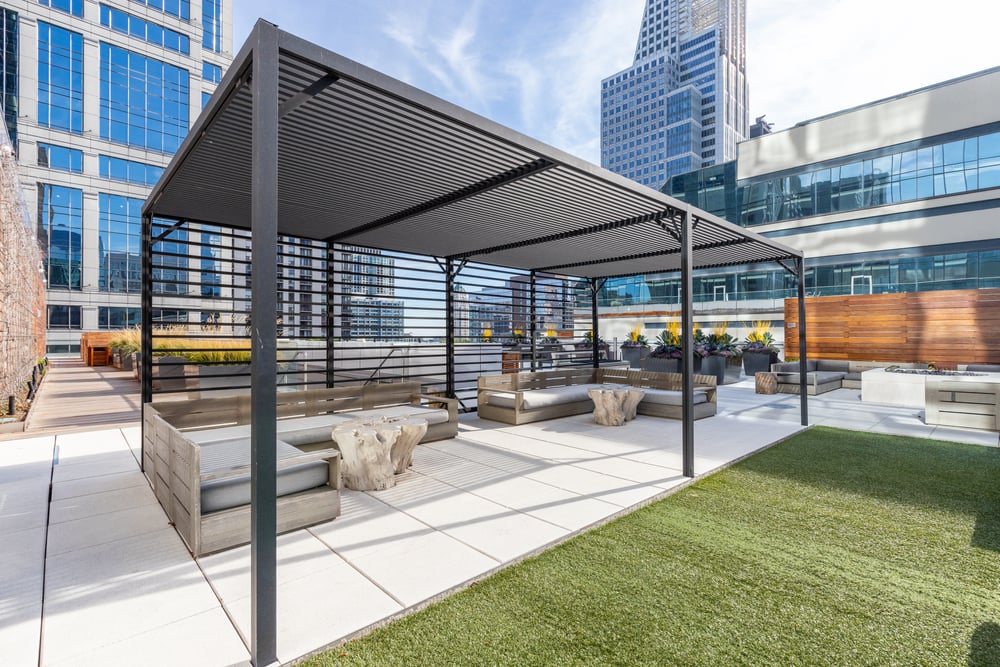
Multifamily trends in 2023 will embrace flexibility, improved technologies, and amenities, as well as biophilia, and a focus on mental health and well-being. Incorporating these trends into maintenance, remodeling projects, and new construction will position property managers and owners for success in the coming year.
The Roots of the Multifamily Resurgence
COVID's rapid spread in 2020 and 2021 saw tens of thousands move into multifamily properties in suburban areas. As a result, the demand for multifamily living was boosted to record levels. According to Costar, rental rates surged throughout 2021 and 2022 to all-time highs.
Several factors have moderated the multifamily market since peaking in the 2nd quarter of 2022. These include large deliveries of newly constructed multifamily units in 2021 and 2022, rising inflation rates, recession-related fears, and soaring rental rates. However, Fannie Mae sees a resilient rental property market in 2023, with rents rising but more modestly. Moreover, CBRE reports that the multifamily market is entering a normalizing period more akin to the pre-pandemic period than the past couple of years.
Heightened Consumer Expectations for Multifamily Living
Multifamily tenants receive several benefits from renting rather than owning. These include flexibility in changing locations and being free of yard care and costly home maintenance responsibilities. But the pandemic's role in the rise in apartment living has further raised tenant expectations.
Let's look at some multifamily trends linked to these new consumer expectations.
Rethinking Indoor Floor Plans
After spending so much time homebound during the pandemic, multifamily tenants are reconsidering how they view their indoor living space. And while many workers are returning to their offices, for some, remote work is here to stay. As a result, there is a heightened emphasis on thoughtful and flexible indoor floor plans.
Tenants seek rooms that flex into a home office, gym, bedroom, or meditation space. Additionally, large kitchen pantries can attract residents looking to avoid the crowds encountered on frequent trips to the supermarket. Post-pandemic buildings that incorporate natural ventilation designs and air purification systems are also trending. These assets help tenants feel that they are protected against airborne disease transmission.
Biophilic Stoops, Porches, Balconies, and Planters
Biophilia refers to the human need to connect with nature. This is a crucial trend for multifamily properties and homes in 2023.
One aspect arising from the biophilia trend lies in stoops and porches. Installing these design elements offers residents a sense of personal refuge. In addition, stoops and porches allow opportunities for communal interaction. Appropriately sized planters can further foster a sense of personal space. Planters filled with plants and herbs offer residents a sense of health and wellness as well as natural fabrics and wood and stone elements.
Recent years have seen an elimination or reduction in the size of multifamily unit balconies. But post-pandemic, consumers seek a sense of being outdoors and breathing fresh air while still being insulated from potential pathogens. Expect balconies to become increasingly popular in 2023.
Communal Spaces
Humans are intrinsically social, so communal spaces will remain a highly desired amenity at multifamily properties. The key will be how to design these to reduce anxiety over airborne health risks. One solution is to create clubhouses and roof decks with discrete breakaway spaces where small groups can gather.
Spurred by the pandemic, remote shopping has also become extremely popular, especially deliveries from popular sources such as Amazon and Door Dash. Installing coded drop boxes can instill a feeling of safety and security from theft or contamination.
Sanitizers and hand wipes are also already commonplace in multifamily properties; expect this trend to continue.
The Role of Technology
Incorporating innovative technology into multifamily housing has been on the upswing for years, and the pandemic has only accelerated this trend. Virtual tours are now a necessity for Class A multifamily properties. Moreover, adopting paperless workflow technology minimizes tenant risk of exposure to pathogens. Smart thermostats and electric energy-efficient appliances are standard, and with more people working at home, built-in communications technology has become a multifamily must-have.
Touchless devices help alleviate the fear of germ hotspots as well. For this reason, look for the deployment of intelligent locks in entryways in addition to auto-flushing toilets, automatic faucets, and automatic doorknobs. Also, look for greater use of materials naturally resistant to viruses and bacteria, such as faucets made from copper and bronze.
Raiven Can Help
Raiven serves multifamily property owners and managers by providing the lowest prices on equipment, parts, and maintenance supplies as well as a purchasing platform that makes buying fast and efficient. Key benefits include:
- Pre-negotiated discounts that are generating average client savings of 7-25%+ from big name suppliers like Ferguson, HD Supply, Grainger, Graybar, Office Depot, and more.
- Supply chain alerts for price and product availability changes on the items that matter to you most.
- Private marketplace houses all your preferred suppliers in one location for easy access to your discounts. No more bouncing around websites comparing prices.
- AI-powered purchasing tools that find the lowest prices even when employees shop outside your network.
Raiven is your one stop shop to save time and money. Ask our clients Core Realty, Lyon Living, or Oaks Property Management what we’ve done for them. Visit Raiven to learn what we can do for you.
If you need your EV charging stations installed, be sure to visit Qmerit, the nationwide leader in electrification solutions.
